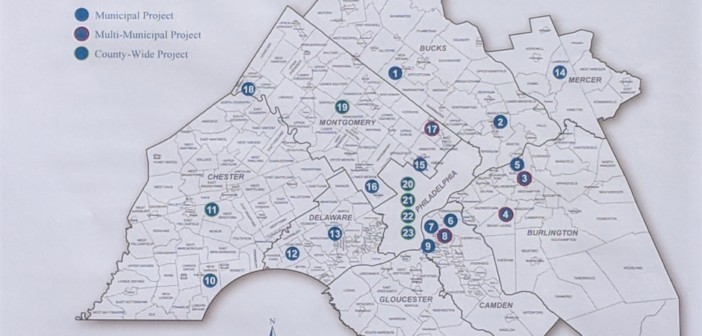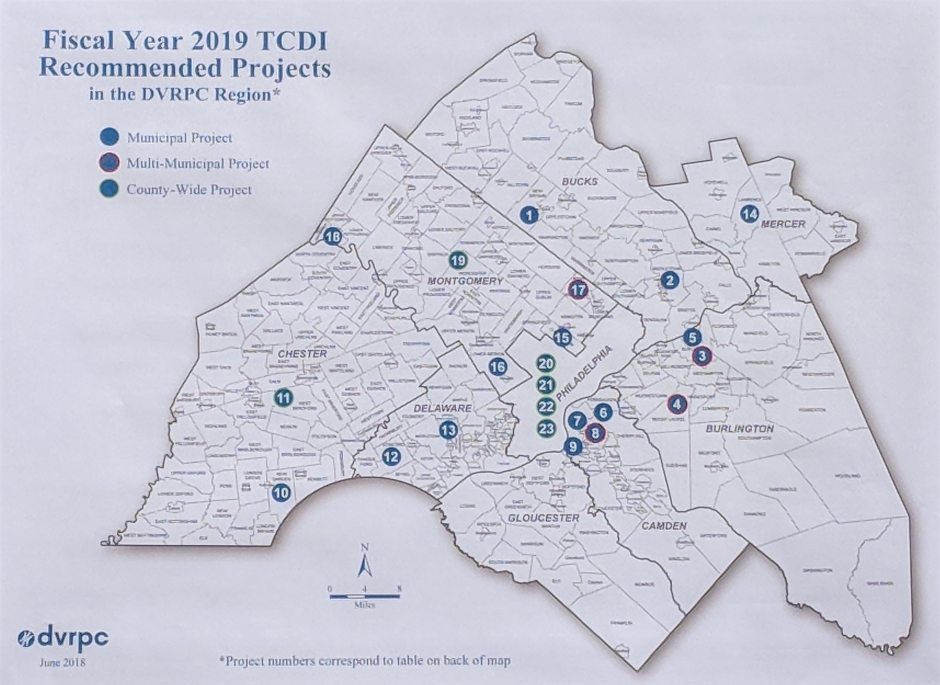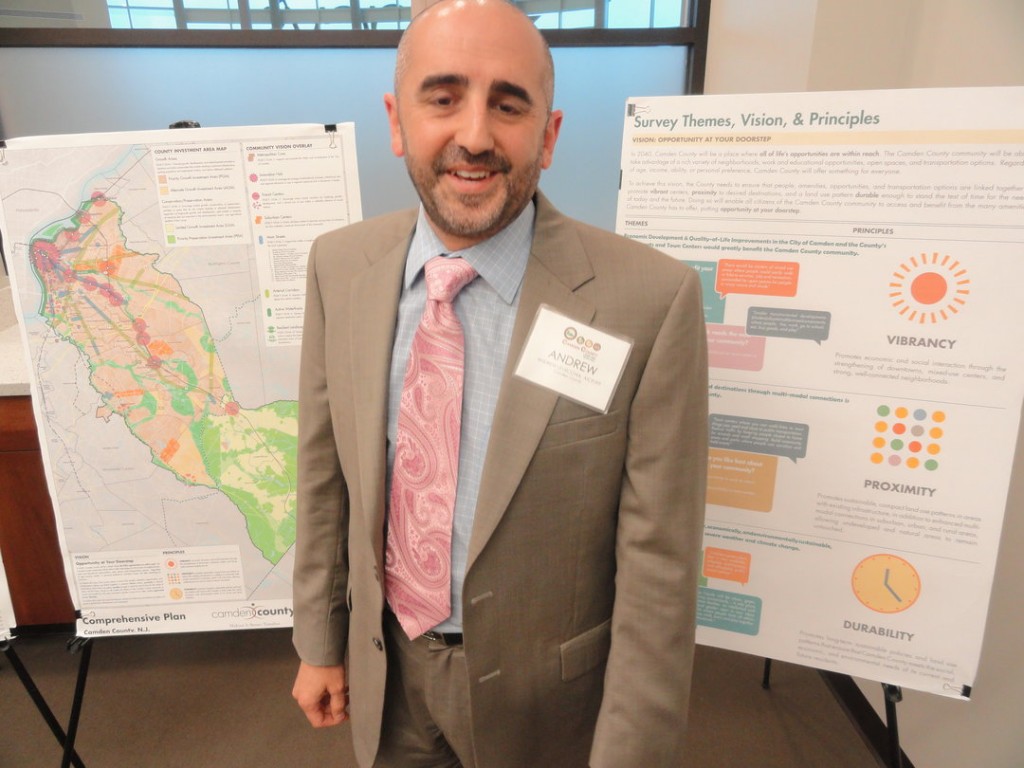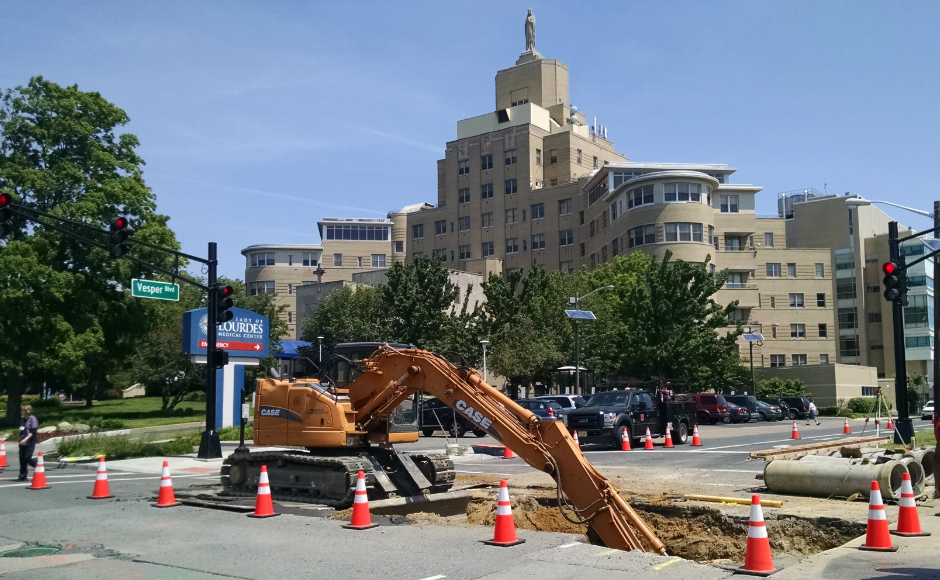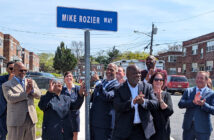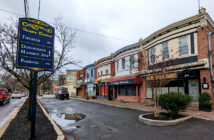The money will be dedicated to two-year studies of infrastructure projects in Haddon Township, Collingswood, Merchantville, and Camden and Gloucester Cities.
By Matt Skoufalos | July 12, 2018
Camden County municipalities took home their share of $1.8 million in federal planning grants announced Thursday, funds that will be dedicated to four projects in five towns through 2020.
The Delaware Valley Regional Planning Commission (DVRPC) awarded $270,000 in Transportation and Community Development Initiative (TCDI) grants for projects in Haddon Township, Collingswood, Merchantville, and Camden and Gloucester Cities.
One will examine bicycle and pedestrian connections between Collingswood and Haddon Township; another will explore transportation impacts along the “Medical Mile” between the Cooper and Lourdes health systems in Camden.
A third involves the “trailscaping” of a multiuse path in Merchantville, while the final study will examine ways to divert commercial vehicle traffic out of neighborhoods in Gloucester City.
Each of the projects will be completed by 2020, and will inform future infrastructure build-outs, said Andrew Levecchia, Camden County Director of Planning.
“This is the first step,” Levecchia said. “It allows us to identify what needs to be implemented in further phases, and what changes.”
The $72,000 master plan connectivity project will determine the best route to link neighboring Haddon Township and Collingswood for bicycle and pedestrian traffic.
The grant narrative notes that between 2012 and 2016, 56 bike and 72 pedestrian crashes have occurred in both communities, resulting in three incapacitating injuries and two fatalities. Neither town has any bike lane, the addition of which could improve non-motor-vehicle commuter traffic.
Lavecchia said the study will examine the feasibility of adding a dedicated bike lane or sharrow to the roadway, whether to divert such traffic away from Haddon Avenue to an alternate road like Atlantic or Park Avenues, and wayfinding for businesses and parking.
“The idea is to figure out if Haddon Avenue’s the right route, or if another street is the best route,” Levecchia said.
“I think the towns and the business owners are worried about parking, and then the road itself.
“Is it wide enough to accommodate a bike lane or a sharrow, and if it’s not, then what’s the best move?” he said.
The $33,000 Merchantville grant will be used to explore “trailscaping” for its 1.5-mile multi-use path, which runs from Cove Road at East Chestnut Avenue to Euclid Avenue. The study will consider the impact of adding trail furniture, including benches and tables, as well as safety lighting for off-peak hours.
The $100,000 Camden study will explore the neighborhood impact of transit-oriented developments on the bookends of the Haddon Avenue “Medical Mile”—Our Lady of Lourdes and Cooper Hospitals.
“This study will look at the road as a corridor versus two different neighborhood plans [in Parkside and Whitman Park],” Levecchia said. “It’ll look at pedestrian connections, all travel modes, and how the neighborhood will be impacted by having a walk-up transit station within a quarter-mile.”
The $65,000 port neighborhood transportation study in Gloucester City will examine commercial vehicle traffic routes in and around Broadway and Main Street, and devise a travel plan to divert it out of residential neighborhoods.
The study will be undertaken in partnership with Holt Logistics.
Camden County Freeholder Bill Moen described the TCDI grants as an essential element of long-term logistical planning that’s “a hidden piece of the process” for municipal redevelopment.
“This is definitely part of that big-picture puzzle,” Moen said. “When folks see a bike route that’s constructed, or pedestrian passing that’s created, they’re not necessarily crediting the planning grant that was done in the first place to allow for it to occur, or even put the feasibility in folks’ minds.”
The freeholder stressed that the execution of the projects is undertaken on a municipal level, but that “this funding makes it easier to let us get to the point where it’s easier to decide yes or no.”
NJ Pen is free thanks to regular, small contributions. Please support our work. Get e-mails, follow us on Facebook, Twitter, and Instagram, or try Direct Dispatch, our new text service.

